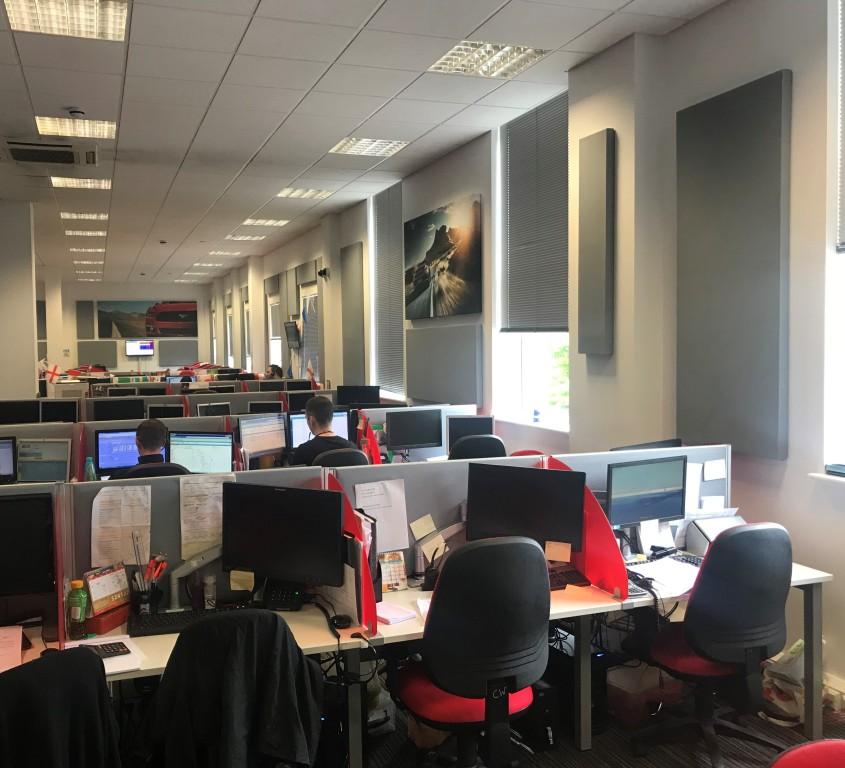Basics of Acoustics and Soundproofing in an Office and Examples
It is no secret that a superior workplace takes acoustic performance into account and can increase productivity by reducing distractions, increasing privacy, and improving comfort for employees and clients. If you are looking into soundproofing an office or for reducing noise within the office or conference room, we have put together some information to help guide you to the right products and the best methods.
Although the terms soundproofing panels and acoustic panels are sometimes used interchangeably, there’s a big difference between soundproofing and acoustically treating the inside of a space and the reasons you would use one product over another depend on the purpose of your treatments.
Use Sound Absorbing Panels on Walls and Ceilings

When examining workplace for soundproofing or treating office acoustics specifically, the simplest way to control noise or reduce echo is to use exceptional sound absorbing products such as our 2″ Spot Panel. The most effective use of absorption is the ceiling plane, not only because this is the largest surface area available and is close to all of the users, but also because this surface, if left untreated, is a key reflector of voice sounds in an open space. To avoid echoes, wall absorbers covering at least one wall, but preferably two adjacent walls, will improve speech clarity and reduce low-frequency disturbance.And don’t be daunted by the task of mounting panels to the ceiling – we’ve made it easy. See our article about Methods for Acoustic Panel or Bass Trap Ceiling Mounting.

If ceilings do not fit into the design concept, absorptive materials can be wall mounted. Office environs will achieve even more effective absorption by spreading treatment evenly throughout the room to reduce the overall RT60 (reverberation time). For best results it is better to avoid lumping panels in one area. Reflections are going to bounce off all walls and ceiling. Treating just one wall will result in flutter echo on the untreated wall. So spread them out evenly in the space. Check out this article on the guys at Strymon who called us to help with the boominess of their warehouse-like space. We provided a highly effective solution with our 242 Acoustic Panels. Whether ceiling or wall mounted, the improvement will be felt in lower voice levels for employees. Sound will not build up as strongly with the reduced reflection. GIK Acoustics provides professional advice and guidance and offers solutions that will meet your business needs and budgetary requirements.



Follow this link for a General Services Administration (GSA) white paper “How to achieve acoustic comfort in the contemporary office”











Share:
Basics of Room Setup
Home Cinema Experience Room Treatment Video